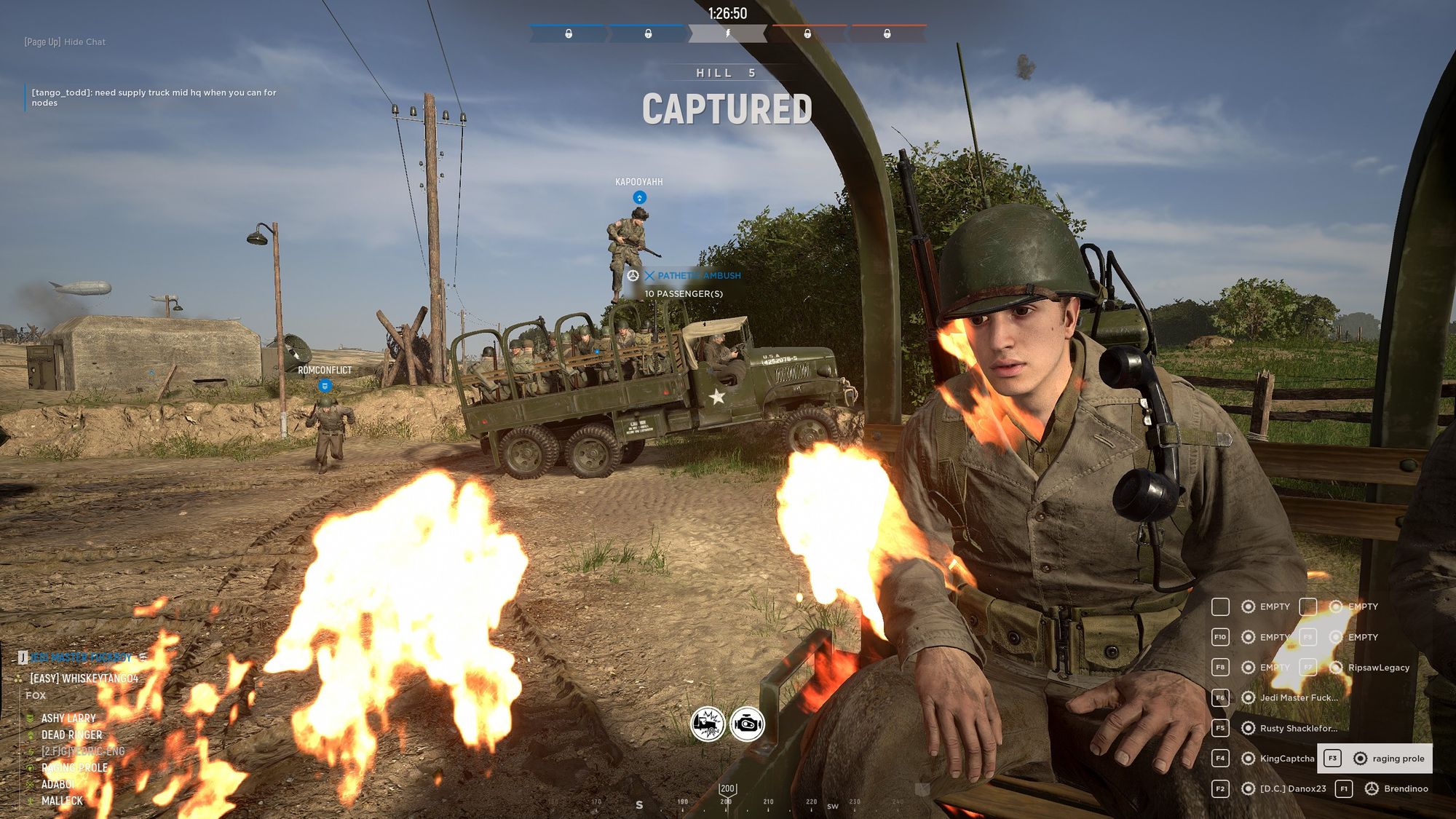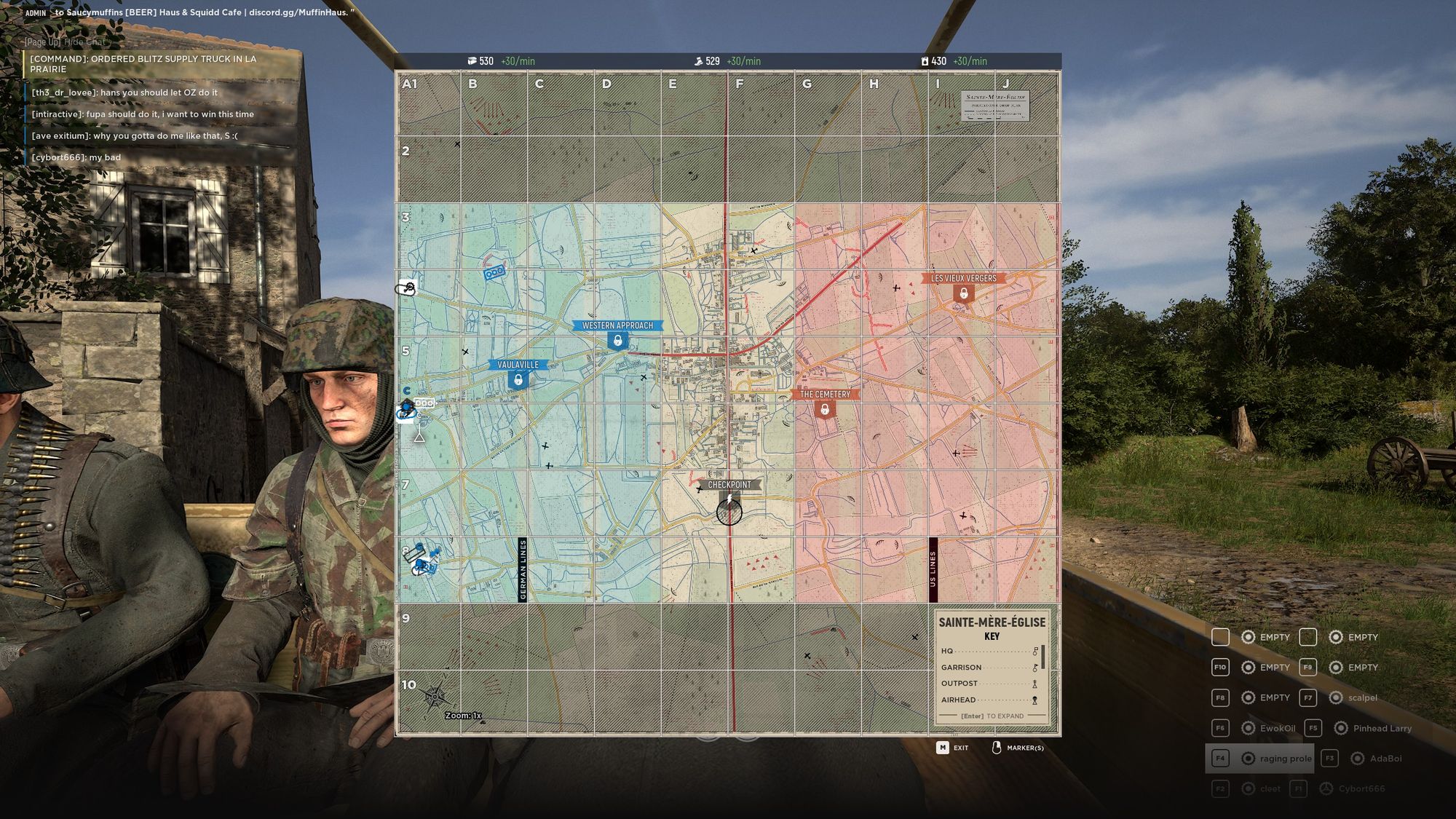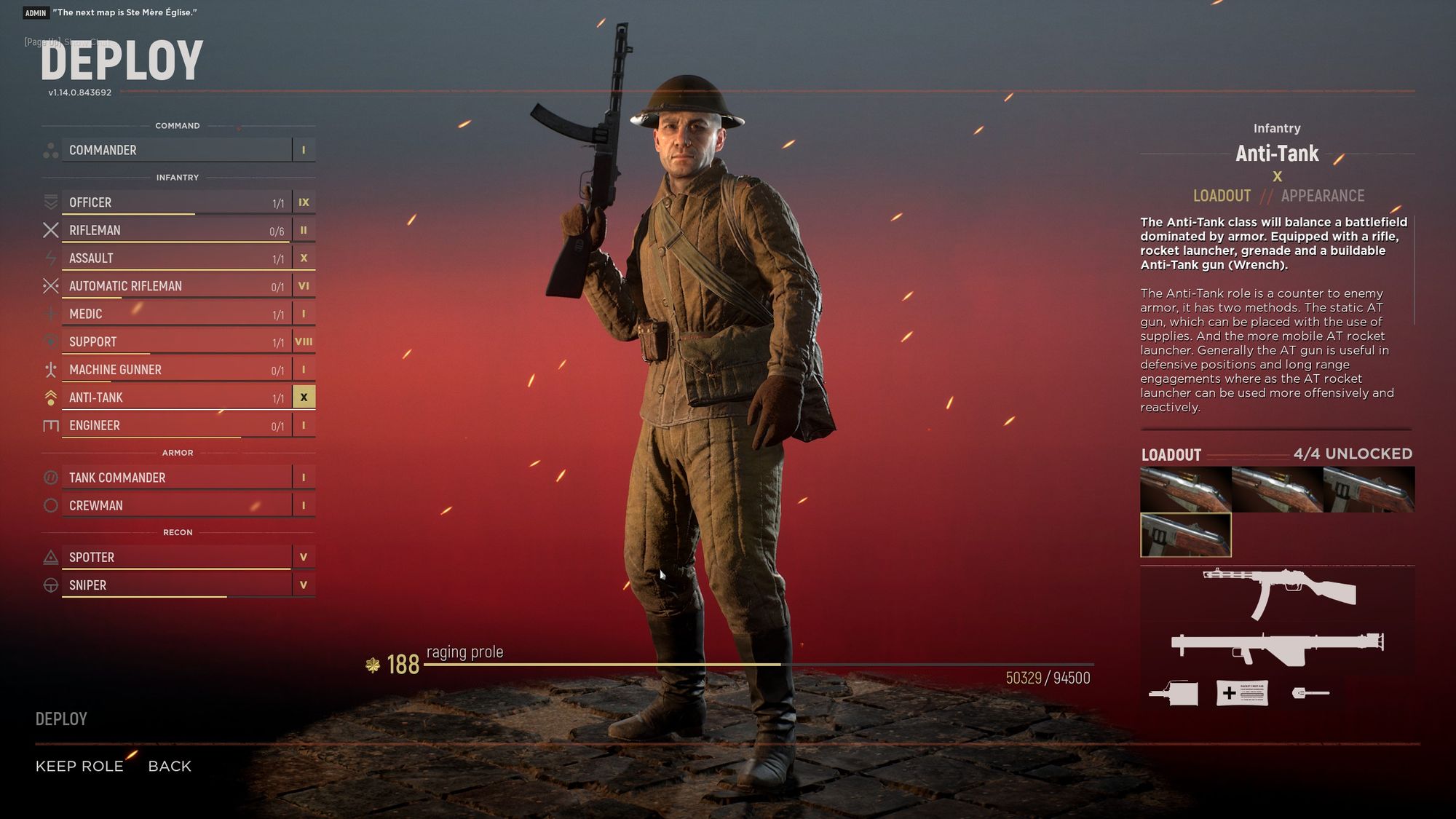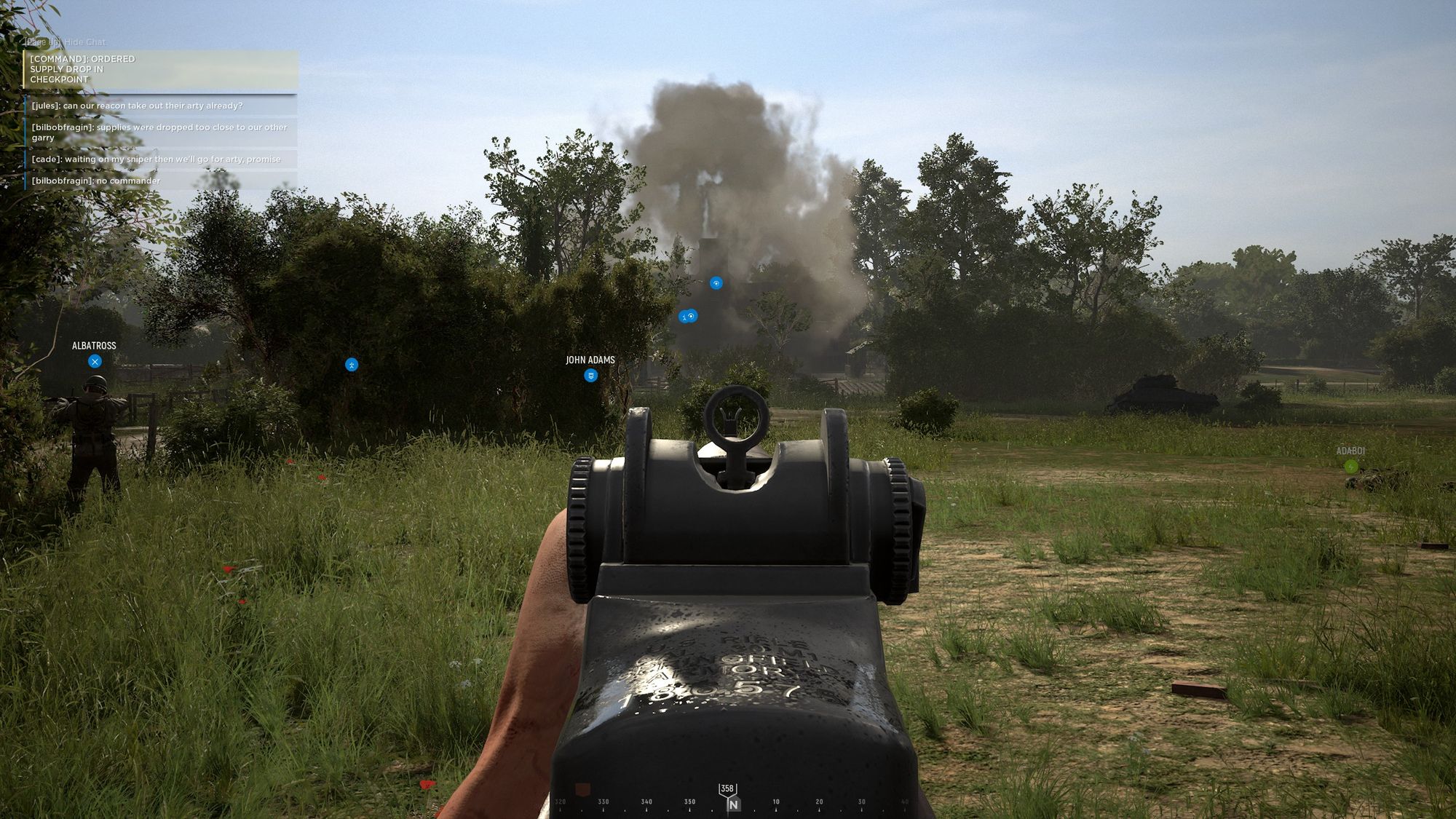Hell Let Loose: Cooperation Amid the Chaos
A balanced multiplayer FPS that unites casual gamers and hardcore military sim enthusiasts

I’m sitting in a truck full of teammates.
It’s the beginning of a match and we’re rumbling toward the first capture point. There’s a steady stream of banter coming in through my headset, and it’s hard to make out what anyone is saying over the engine. Someone starts blaring Journey’s Don’t Stop Believin’ through his headset, triggering a flashback to every drunken night I’ve ever had. War is hell.
Don’t stop belieeeeeeee-
A burst of machine gun fire cuts off the tunes. A few of us jump out of the truck just as a rocket slams into it, sending bodies flying everywhere. I dive for cover and bandage myself up.
“That was close,” I think to myself as a friendly artillery shell lands on my head.
Hell Let Loose, a World War II-themed multiplayer FPS that came out of early access in 2021, embraces the expected chaos that arises when Internet strangers and explosions collide. However, the game’s thoughtful mechanics and decent player community elevate it above other shooters I’ve encountered in recent years.

The Basics
Hell Let Loose features 100-player matches set on sprawling WWII-era battlefields. In its primary mode, Warfare, two teams fight over a series of five strong points. Each team starts with control over two points and matches start with a frantic push to capture the middle. To gain an edge, teams use supply drops and buildable spawn points, strategically outmaneuvering one another in their offensive and defensive efforts.
Within the game, players have the freedom to join infantry, armor, or recon squads, or they can test their mettle as a commander. Catering to diverse play styles, Hell Let Loose offers a total of nine infantry classes, two recon classes, artillery batteries, and multiple tanks for each faction, which currently includes Germany, USSR, USA, and Great Britain.
Sweet Spot Between Sim and Casual
I used to play Battlefield extensively and while I had enjoyable moments with the franchise over the years, I couldn’t help but notice the lack of a strong teamplay element. Aside from occasional bursts of cooperation, these games primarily involve running around and shooting at stuff with little incentive for other gameplay styles.
That being said, I haven’t been able to fully embrace the more sim-focused shooters either. I often find them slow-paced and intimidating, with excessively steep learning curves. Additionally, the player community in these games leans towards the overly serious side, which hasn’t resonated well with me.
Hell Let Loose skillfully strikes a balance between the two types of shooters. Its mechanics are deep enough to promote teamplay and cooperation without burdening the action with excessive complexity. Winning a match revolves around constructing resource nodes, dropping supplies, and building spawn points to maneuver past the other team’s defenses.

The game’s simplicity is a huge plus, especially considering the challenge of organizing 50 people to work together effectively. It’s not uncommon to see a team being overwhelmed within the first 20 minutes of a 90-minute match simply because they struggled to coordinate their efforts.
Interestingly, teams get their act together often enough, and the game truly shines when this happens. I’ve experienced thrilling matches where strong points exchanged hands regularly, and neither team could get the upper hand throughout the entire 90-minute map duration. Sometimes, even a team facing a steamrolling attack musters the strength to defend the final point, launch a counteroffensive, and sweep across the map to secure a triumphant victory.
Squads and the Player Community
Most times, players will find themselves in a six-person infantry squad, with an officer leading the group. Your squad’s dynamics can significantly influence your experience in each match, so it’s worth exploring other options if things seem too quiet. The game truly thrives when the officer is proactive, and everyone engages with each other.
Officers are responsible for communicating with the team’s commander, setting up spawn points for their squad and the entire team, and providing each squad member with a sense of direction. Their guidance can range from general instructions like “attack/defend” to more specific objectives such as “we must clear out that damn farmhouse at all costs, even if it takes the entire game.”
Joining an organized squad allows you to make the best of your chosen class. Engaged squad leaders frequently request supplies from the support class to construct spawn points, direct anti-tank specialists to their targets, or enlist engineers to build essential resource nodes and defenses. Although the classes aren’t overly complex, each one contributes more than just firepower to the team’s overall strategy.

Cooperating and working well as a squad also keeps your spawn points close to the action. Given the vastness of these maps, spawning far away and aimlessly running for 10 minutes, only to be shot without encountering an enemy, isn’t a lot of fun. By focusing on effective squad play, these frustrations are significantly cut down, leading to some of the most rewarding moments you’ll experience while playing Hell Let Loose.
The obvious question here is how often does this actually happen?
As with any multiplayer game community, experiences can be hit or miss. Sometimes, you end up with an engaged squad leader and a chill, friendly group of players, while other times you don’t. Communication may be lacking, or the squad leader’s direction might be uncertain. Other times, you may encounter a fantastic squad, only to end up on a team that collapses almost immediately. It can be chaotic, but the reward lies in persevering for those moments when everything aligns for an incredible gaming experience. In my time with the game, these occurrences happen often enough to keep me invested in playing.
On a positive note, outright toxicity is relatively uncommon compared to other shooters I’ve experienced. Many servers are managed by clans with engaged admins who actively monitor trolling, griefing, and any instances of Nazi glorification (a problem that can arise with WWII games). In cases where an admin is unavailable while someone is making an ass of themselves, individuals can be easily muted, allowing you to avoid listening to them altogether.
As a whole, I’ve found that the players of this game are both friendly and supportive, even when interacting with newcomers or individuals trying out the commander role for the first time. Hell Let Loose players readily offer help in understanding specific classes or game mechanics whenever someone is having trouble figuring things out.

A Solid, Less-Toxic FPS Experience
In taking the middle ground, Hell Let Loose faced the possibility of alienating both casual gamers and those seeking a hardcore military sim experience. Surprisingly, its servers are consistently filled with players from both camps, showing that it successfully found that sweet spot. With a reasonable player community and mechanics that are deep yet not overwhelming, this game proves to be a solid choice for anyone seeking an immersive and sociable shooting experience.
